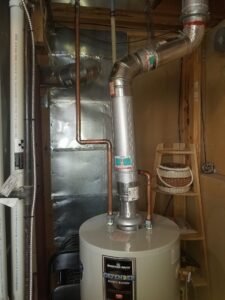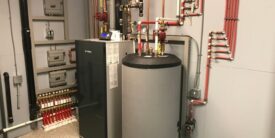A hot water tank, often known as a water heater, is one of the most important appliances in today’s homes. We briefly discussed hot water tank installation in Calgary in one of our recent blogs. Today, we will try to figure out how a water heater works.
A hot water tank is in charge of providing hot water for daily tasks like cleaning dishes, showering, and doing laundry. Understanding one’s general operating principle will help you diagnose common problems and ensure that it continues to function optimally for years to come.
The main working principle of a hot water tank
A hot water tank’s primary function is to heat water and store it in an associated reservoir until a necessity arises. The tank is normally composed of steel or another durable material and is insulated to prevent heat loss from natural causes. A heating element or hob at the bottom of the tank heats the water and keeps it at the proper temperature until you release it.
Tank-style water heaters
There are two basic types of water heaters available today: tank-style and tankless. For the uninitiated, cold water enters the reservoir through a conduit before being heated by an electric heating element or a gas hob beneath it.
The hot water then rises to the top of the tank, where it is stored until needed. A thermostat on the tank keeps the water temperature at the desired level by activating and deactivating the heating element or hob underneath.
The tank also includes a release valve, which opens when the water pressure exceeds the safe limit. This essentially prevents the tank from bursting and causing major damage to its surroundings, as well as hurting anyone who was around at the time and maybe using the water heater. A drain valve at the bottom of the tank enables for simple periodic maintenance and water drainage as needed.
Tankless water heating
As obvious as it may sound, a tankless water heater has no reservoir, and water runs via a heat exchanger, where an electric heating element or gas burner heats the water as it flows through the pipes before reaching the tap or device that requires hot water.
Tankless water heaters are becoming more energy efficient than tank-style water heaters since they do not need to provide a supply of heated water until you need it, and hence do not waste electricity or gas on a continuous basis to maintain a large tank of hot water.
How to take care of a Hot Water Tank
Flush your water heater as often as possible to keep it running smoothly, and you’ll get rid of any sediment that has built at the bottom of its tank. It can make a hot water tank work less efficiently and possibly damage the electric heating element or gas hob. You must remember to check the release and drain valves on a regular basis by hiring a top local specialist with extensive knowledge of hot water tank installation in Calgary.

